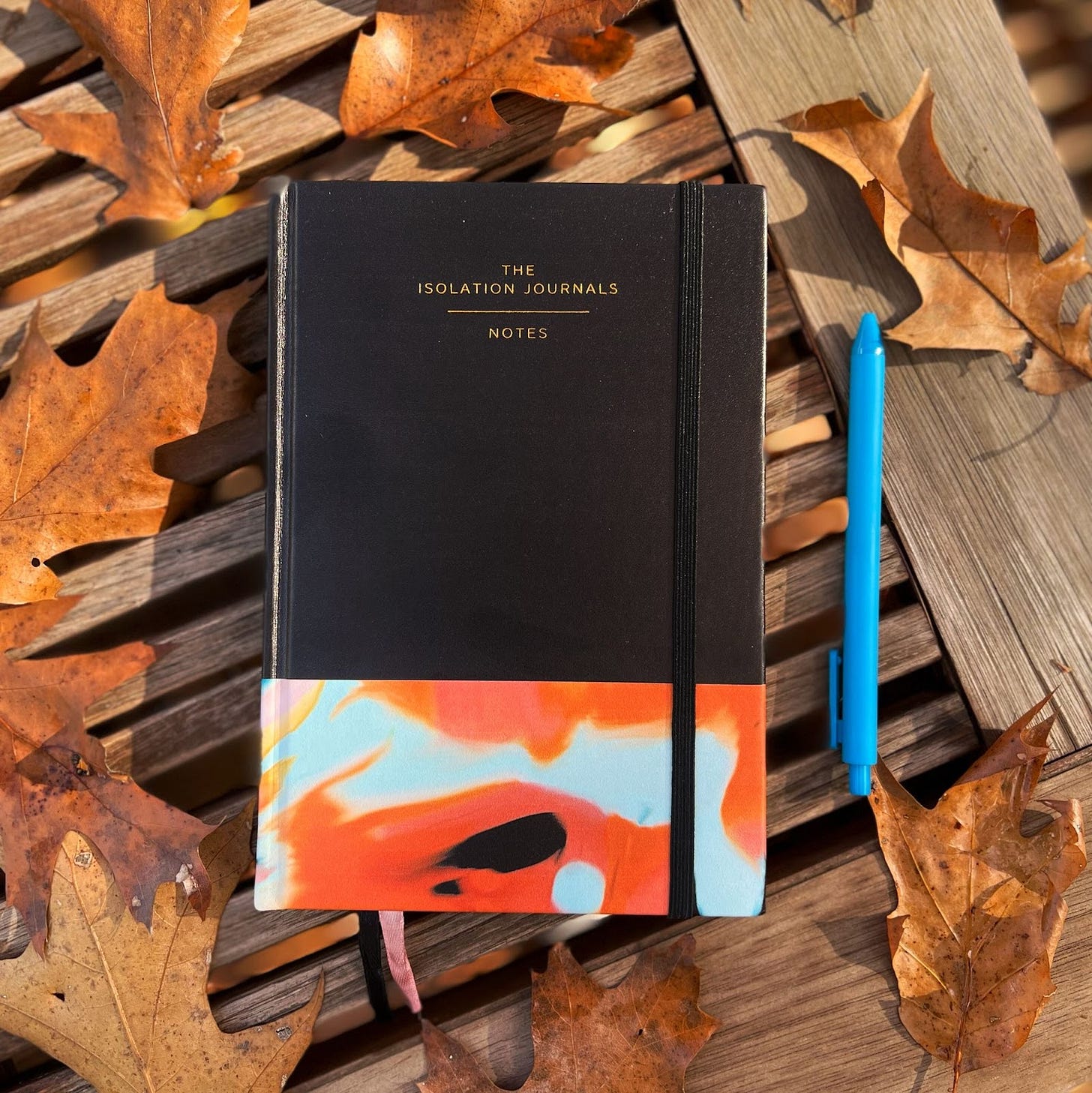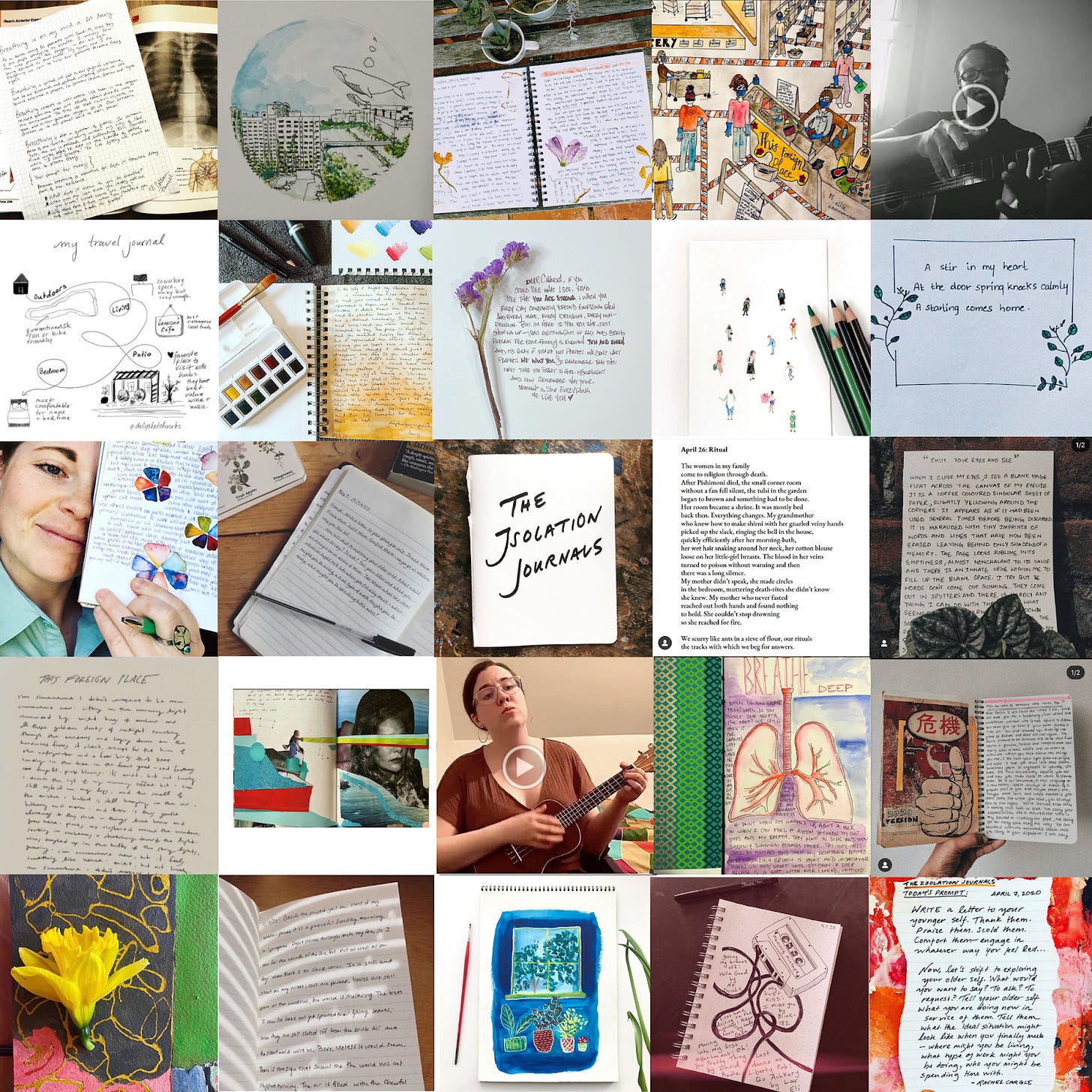Engage is an offshoot of our Grow interview series. It highlights the stories and best practices of how writers grew their readership through interaction and community-building.
In her newsletter The Isolation Journals, New York Times best-selling author Suleika Jaouad cultivates a devoted community seeking to translate isolation into connection and creative inspiration. Here, she puts forward her unique approach to getting to know her readers, invoking a circle of contribution, and meeting readers where they are.
This interview has been lightly edited for length and clarity.
What’s your Substack about in one sentence?
The Isolation Journals is my newsletter for people interested in transforming life’s interruptions into creative grist.
Who are your readers? Why do you think they read it?
The Isolation Journals was originally born of the pandemic, and within a couple months after launching in April 2020, 100,000 people had subscribed. What made that awe-inspiring was not just the number of people but the breadth—to have people from all over the world, of all ages, from young children to my 95-year-old grandmother.
My newsletter is centered around creativity, and there are lots of artists, writers, dancers, and musicians. But there are also a lot of people who wouldn’t call themselves creative but who are yearning for a space to make meaning of their lives and the world around them, who are interested in expression and meaningful connection. That has continued to be the case as the pandemic has evolved and the world opened back up. Despite all the ways we have to connect, isolation is a facet of modern life that existed long before the pandemic and will long outlast it.
My readers return every week partly for my personal musings but also because they get to encounter a new voice each Sunday. At this point, we have nearly 200 different contributors who have shared a short essay and writing prompt, from the author Elizabeth Gilbert to the public academic Rachel Cargle, with musicians like Maggie Rogers and [my husband] Jon Batiste, from a Buddhist nun named Sister Peace to a 6-year-old cancer patient named Lou Sullivan. My readers get something familiar and intimate, but they also get something expansive: something that’s a surprise.
What is your content strategy?
Posts go out every Sunday at 5 a.m. ET. I started The Isolation Journals in April 2020 as a 100-day project in the form of a free daily newsletter. We were in the early days of lockdown, and my hope was to share a grounding journaling practice that had helped me navigate my own experience of isolation while undergoing cancer treatment. After the first 100 days, by popular demand, I continued sending out the newsletter but switched to a weekly cadence.
There are a number of offerings for paid subscribers, in addition to the free weekly newsletter. My friend and Isolation Journals collaborator Carmen Radley hosts The Hatch, a virtual creative hour where our community gathers together once a month to write, draw, dance—whatever calls to them. I recently launched a monthly advice column, Dear Susu, which has been such a wonderful way to be in conversation with my community and has been a great source of growth. Finally, we’ve been sending bonus check-ins, pep talks, reflections, and community discussions to paid subscribers for our latest community activation: a new 100-day project (if you’re interested, it’s not too late to join!).
I never want the cost to be a barrier to entry for someone who really needs this work, so I offer unlimited scholarships, no questions asked. What’s been beautiful has been seeing community members jump in and offer to sponsor scholarships. It has become this gorgeous circular ecosystem of support and nurturing.
How have you gotten to know your readers?
I’ve gotten to know our readers through their comments on the weekly newsletter and their responses to the writing prompts. We’ve also gotten to know each other through monthly virtual gatherings: for the first year and a half, I hosted a monthly in-conversation series called Studio Visits with a different extraordinary artist, and the conversation was fueled by questions and anecdotes from the community. Then there’s the Hatch, which is a Zoom meeting where everyone has their camera on, and it ends up being a very warm, inviting, intimate experience.
Many readers came with me from other places: from my New York Times column Life, Interrupted, which I wrote in my early 20s during my first round of cancer treatment, or from my memoir Between Two Kingdoms. Others came to the newsletter through our various contributors. However, a large number have come from the community itself, by word of mouth.
But since starting The Isolation Journals, it’s been amazing to watch people in the community form friendships. They have grieved together and celebrated together and supported each other in their creative practices, forming writing groups or meeting up offline.
Can you tell us about a particularly meaningful moment of reader interaction?
A few months ago, I got a question for my Dear Susu column from a community member named Terri who wondered how to stay strong during her daughter’s health setbacks. Her 30-year-old daughter was in treatment for a very aggressive, stubborn form of leukemia, and she was having lots of complications. Terri was adrift, worried, and depleted. I had recently learned that my leukemia was back, and my mom—the best caregiver I know—helped me answer it in an installment called Love in the Time of Cancer.
Later we learned that Terri’s daughter had passed away, which broke our hearts. In time, it came out that Terri and her daughter were from my hometown, and when I got my second bone-marrow transplant, we had been in the same hospital, at the same time, on the same floor, just a few doors apart. The night her daughter died, my husband Jon and I had gone for a walk around the unit, and we noticed a family gathered outside one particular room. We knew what had happened, which felt so heavy, even though we didn’t know them. It was very surreal but also very moving to connect with Terri, because we got to learn about her story, to hear more about her vibrant, precious daughter. Somehow it’s a little easier to bear, a little less lonely, when we are able to share about the hard things.
When you’re fortunate enough to have a community like this, the world already feels cozy and smaller than it might otherwise. But to be able to connect in this way, to create this call and response, to have people share their vulnerabilities, to watch that somehow alchemize into strength through connection—it’s very special.
What’s the most interesting or surprising thing you’ve learned about or from your readers?
One thing that has surprised me—because the internet can be such a brutal place—is how lovely my readers are. Someone said it’s the kindest, most supportive corner of the internet, and I think it’s true.
We established strict and clear community guidelines from the beginning (no hate speech, no self-promotion, all that). We expected we’d have to keep a close eye on everyone to make sure they were following them—that we’d have to play referee. But honestly our community has been so wonderfully supportive of one another, so encouraging on so many levels: creatively, professionally, personally. This has been true on every platform, whether our Facebook group or our Instagram or in our Substack comments section. Recently the latter has become our most dynamic space, and I love it. It’s become my favorite part of the newsletter.
What’s the sharpest insight you can offer other writers about engaging with their readers?
The first insight is engaging your readers with a direct question. Sometimes I think the call and response is implied, but I’ve found there’s value in asking a direct question in your newsletter—even if the readers don’t answer it, even if they just use it as food for thought.
The second is that, when I am composing my newsletter, I think of it as going to one reader, rather than to a group, and I address the reader that way—“Hi friend.” This changes the way I write the newsletter, because I imagine an actual human receiving it, rather than this undifferentiated mass of people. And I believe it changes how the reader receives it. All in all, it’s more intimate. It’s more personal, more direct, more connected.
When I am composing my newsletter, I think of it as going to one reader, rather than to a group, and I address the reader that way—“Hi friend.” This changes the way I write the newsletter, because I imagine an actual human receiving it.
What’s another Substack you’d recommend?
I’m loving Dinner: A Love Story by Jenny Rosenstrach. I’m obsessed with her cookbook The Weekday Vegetarians, and her newsletter is so good—smart, personal, practical, cheerful. I’m always happy when I see it pop up in my inbox.
Subscribe to The Isolation Journals with Suleika Jaouad, and find Suleika on Twitter, on Instagram as herself and as The Isolation Journals, and Facebook.
What questions do you have for Suleika that we didn’t ask? Leave them in the comments!
To read more from this series, subscribe to On Substack and take a look at the previous posts in our Grow series.






